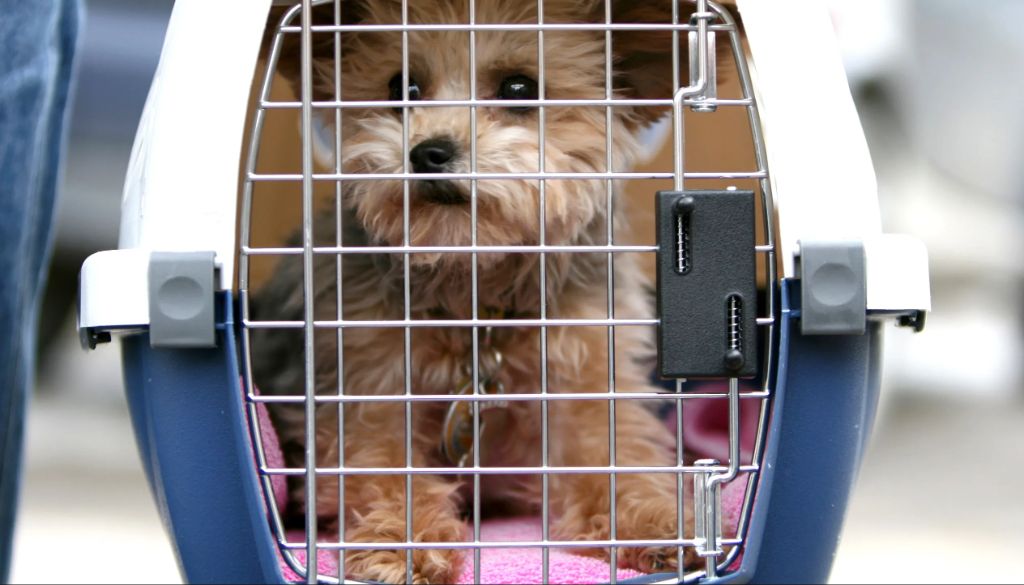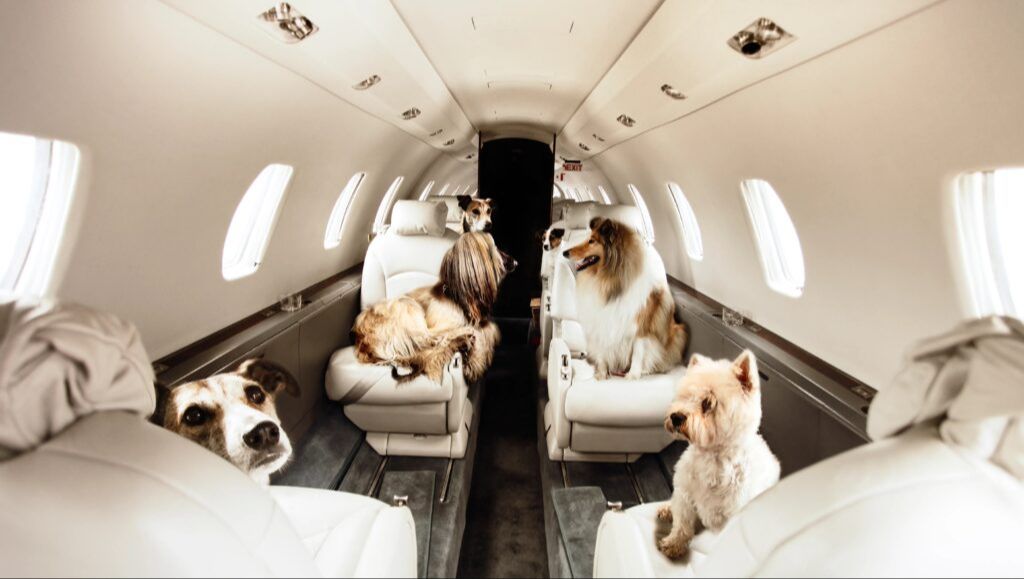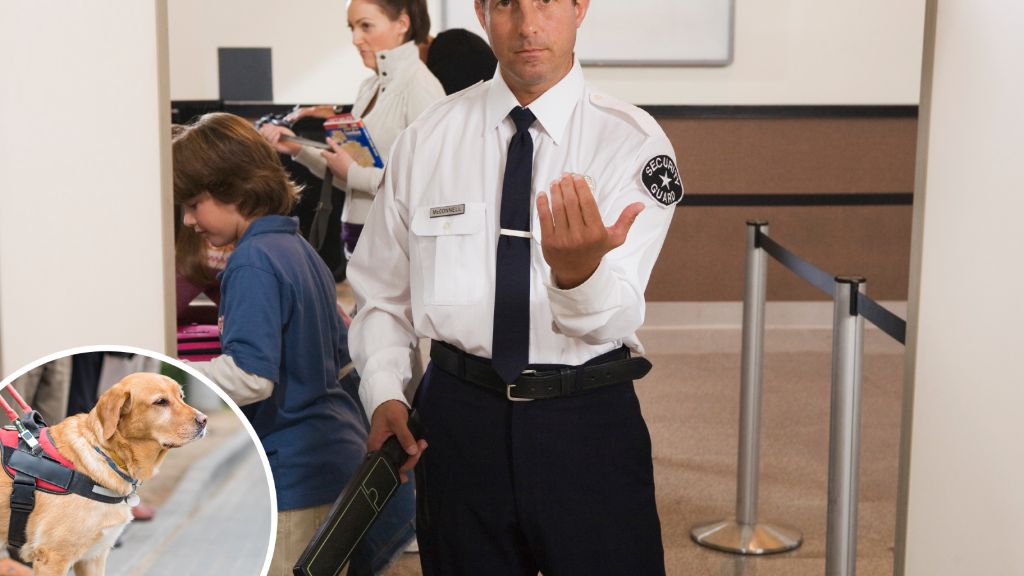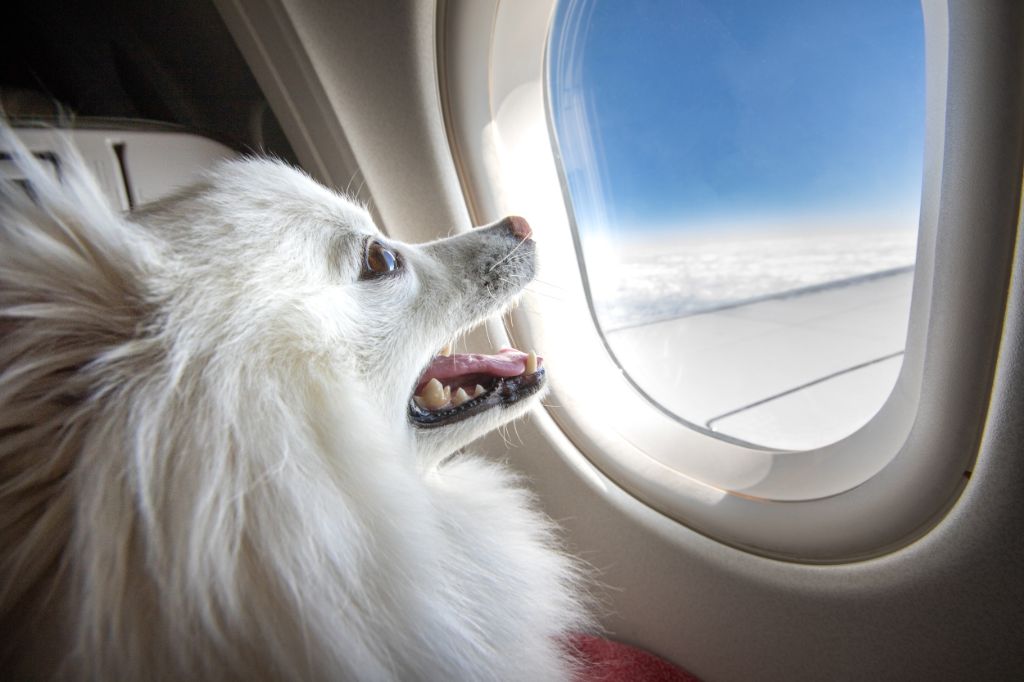Introduction
Flying with pets in the cabin is an option many dog owners consider for convenience and keeping their dog close by. While airlines do allow small dogs and cats in the cabin on most flights, there are restrictions and requirements to be aware of. In this article, we will cover airline policies for in-cabin pets, maximum dimensions allowed, factors that determine if your pet can fly in the cabin, booking requirements, how to prepare your pet for the flight, what to expect at the airport and on the plane, considerations for international flights, and tips for a smooth experience. Having the right information ahead of time will ensure a safe and stress-free flight for both you and your furry companion.
Airline Policies
When it comes to flying with pets in cabin, policies vary widely between airlines. According to BringFido, PetTravel.com, and GoPetFriendly, most major US airlines allow small dogs and cats to fly in cabin, but have restrictions on size, number of pets, fees, and booking requirements.
For example, Delta and JetBlue allow pets up to 20 pounds while United, American and Alaska Airlines draw the line at 19 pounds or less. Frontier and Spirit have maximum dimensions of 16″x8″x14″ for pets in carriers. Service animals and some emotional support animals may receive exceptions.
Airlines also limit the number of pets allowed per passenger, typically 1-2 pets in cabin. Fees range from $95-125 each way. Advance booking, health certificates and other documents may be required.
So when choosing an airline, it’s important to carefully review size restrictions and all pet policies to ensure your pet qualifies for in-cabin travel.
Maximum Dimensions
Airlines have specific size requirements for pet carriers that can travel in the cabin. While the exact maximum dimensions vary by airline, most allow carriers that are 18 inches long by 11 inches wide by 11 inches high at largest. For example, Alaska Airlines allows pet carriers up to 17 x 11 x 9.5 inches, American Airlines permits carriers up to 18 x 11 x 11 inches, and United Airlines’ maximum dimensions are 17.5 x 12 x 7.5 inches.

Make sure to check with your specific airline to confirm the maximum dimensions they permit for in-cabin pet carriers. This will help ensure your pet is allowed to fly in the cabin with you during the flight.
Factors that Determine Eligibility
When reviewing pet eligibility for cabin travel, airlines consider several factors about the animal’s size, breed, and temperament. Key factors include:
-
Weight – Most airlines restrict pets to under 15-20 pounds to fly in-cabin.
-
Breed – Airlines often prohibit snub-nosed or brachycephalic breeds like pugs and bulldogs due to potential breathing issues at altitude.
-
Species – Airlines may only allow domestic dogs and cats in-cabin.
-
Age – Puppies and kittens under 8 weeks old are typically not permitted.
-
Health – Pets must appear healthy, clean, and well-behaved to fly.
-
Crate size – The pet carrier must fit under the seat with room for the passenger’s feet.
-
Temperament – Aggressive or anxious pets that could disturb other passengers may not be allowed.
Checking with the specific airline is important, as policies vary. Factors like breed restrictions aim to ensure pet and passenger safety and comfort. Advanced booking, proper crating, and socialization is key for in-cabin pet travel.
Booking Requirements
Most airlines require pet owners to notify them in advance if they plan to travel with a pet. This allows the airline to ensure there is space available for the pet. There are usually fees associated with bringing a pet onboard.
On United Airlines, there is a $125 fee each way for traveling with a pet in cabin [1]. Reservations must be made at least 48 hours in advance. There are limits on the number of pets allowed on each flight, so it’s important to let them know as early as possible. The pet must be at least 8 weeks old to fly.

At American Airlines, fees are $125 each way for flights in the U.S., Puerto Rico, the U.S. Virgin Islands, and Canada. For other international destinations, the fee is $200 each way [2]. Advance reservations are required, and there are also limits on the number of pets per flight. The pet must be at least 8 weeks old.
Delta Air Lines charges $125 each way for flights within the U.S. For international flights, the fee is $200 each way. Reservations must be made at least 48 hours in advance [3]. The pet must be at least 10 weeks old.
In most cases, pet owners will need to provide a health certificate from a vet issued within 10 days of travel. There may also be country-specific paperwork required for international destinations.
Preparing Your Pet
Proper preparation is key to reducing stress and ensuring a smooth travel experience for your pet. Here are some tips for getting your pet travel-ready:
Acclimate your pet to their airline-approved crate or carrier. Allow them to get used to being inside for periods of time and associate it with positive rewards. This will make them more comfortable on travel day. Refer to the USDA’s guidance on properly preparing pets and crates for air travel: https://www.aphis.usda.gov/aphis/pet-travel/pets-on-planes/lesson1-pets-on-planes/preparing-pets-for-air-travel
Visit your veterinarian to obtain a health certificate and confirm your pet is fit for travel. Certain vaccinations may be required. Make sure your pet’s microchip is up-to-date with current contact info in case you get separated.
Feed your pet a light meal 3-4 hours before travel to prevent nausea. Avoid feeding right before the flight.
Pack necessities like food, medications, cleaning supplies, and a favorite toy or blanket to comfort your pet.
Confirm all airline and TSA requirements are met to avoid issues on travel day. Have proper identification tags, labels, and paperwork.
Limit exercise and stimulation right before the trip to curb anxious energy.
At the Airport
When arriving at the airport with your pet, be sure to allot extra time to get through check-in and security. You will need to take your dog out of its carrier and hold it in your arms when going through the security checkpoint. According to the TSA, “Remove the pet from the carrier just prior to the beginning of the screening process. Put the empty travel carrier on the conveyor belt to be x-rayed, then carry the pet through the walk-through metal detector or walk it through the advanced imaging technology unit” (TSA). The TSA will visually inspect and swab your hands to check for traces of explosives after handling your pet.

Be prepared for your dog to get anxious or excited going through security. Keep a tight hold and stay calm. Have treats ready to reward and distract your dog. Consider requesting a private screening if you anticipate issues. Avoid busy times at the airport if possible. Once through security, return your dog to its carrier.
On the Plane
When flying with your pet in the cabin, it’s important to ensure proper ventilation and comfort for your furry companion while in their carrier. Some tips for in-flight pet care include:
Make sure there is adequate airflow to the pet carrier. Most airlines require keeping the carrier under the seat in front of you during takeoff, landing, and turbulence. Check regularly that air vents aren’t blocked so fresh air can circulate into the carrier.
Consider placing a frozen gel pack or water bottle wrapped in a towel inside the carrier to help regulate temperature. Check with the airline first if cooling items are permitted.
Keep the carrier covered with a light blanket to minimize stress and create a den-like environment. Be sure to remove during takeoff and landing.
Avoid giving your pet food or treats during the flight to prevent air sickness. Hydrate with a small amount of water if needed.
Comfort your pet with gentle strokes and soft speaking. Familiar toys or blankets in the carrier can also help ease anxiety.
Take your pet for a short bathroom walk during any layovers. Most airlines require pets to remain in their carriers during flight.
Notify the flight attendant if you have any concerns about your pet while in-flight. Never remove your pet from their carrier during the flight.
Following airline pet policies and providing proper in-flight care will help make the flight as comfortable as possible for your furry travel buddy. For more tips, check out this in-depth guide on in-flight pet care from pet relocation experts Flight Nanny: https://flightnannyqtpettransport.com/pet-shipping-dos-and-donts/
International Flights

Flying with pets internationally comes with additional restrictions and requirements beyond domestic flights. According to United Airlines, pets must be at least 4 months old to comply with vaccination and acclimation requirements.
Many airlines have restrictions on which countries pets can fly to. For example, Tour Radar notes that Air France only allows dogs and cats to certain destinations like the US, Morocco, and Turkey. Other airlines are more flexible – Delta allows pets to fly to most international destinations they serve.
There are also country-specific requirements that must be met. This includes things like obtaining an import permit, having a microchip implanted, and meeting vaccination timelines. airlines will require documentation to prove these requirements are satisfied before allowing pets on international flights.
Summary
When traveling by air with your dog, there are a number of important factors to consider regarding your pet’s size and the airline’s policies. Most major US airlines allow dogs that can fit in an approved carrier under the seat in front of you, generally with dimensions of 8.5″ H x 13.5″ W x 21.5″ L or less and weighing 20 pounds or less. Fees, advance booking requirements, and other specifics vary between airlines. Key factors that determine your dog’s eligibility to fly in cabin are their weight, breed restrictions, ability to comfortably fit and move around in an approved carrier, and how they handle air travel without disturbing other passengers. Always check with your specific airline for their latest rules. If your dog exceeds the size limits or is not a permitted breed for in-cabin, they may still be able to travel as checked cargo or via pet shipping services. Proper preparation and an approved carrier that meets the airline’s specifications are crucial for smooth travels. When booking, reconfirm policies and be aware of any seasonal embargoes or restrictions. With some advance planning and preparation, air travel can be a suitable option for getting your dog to your destination.